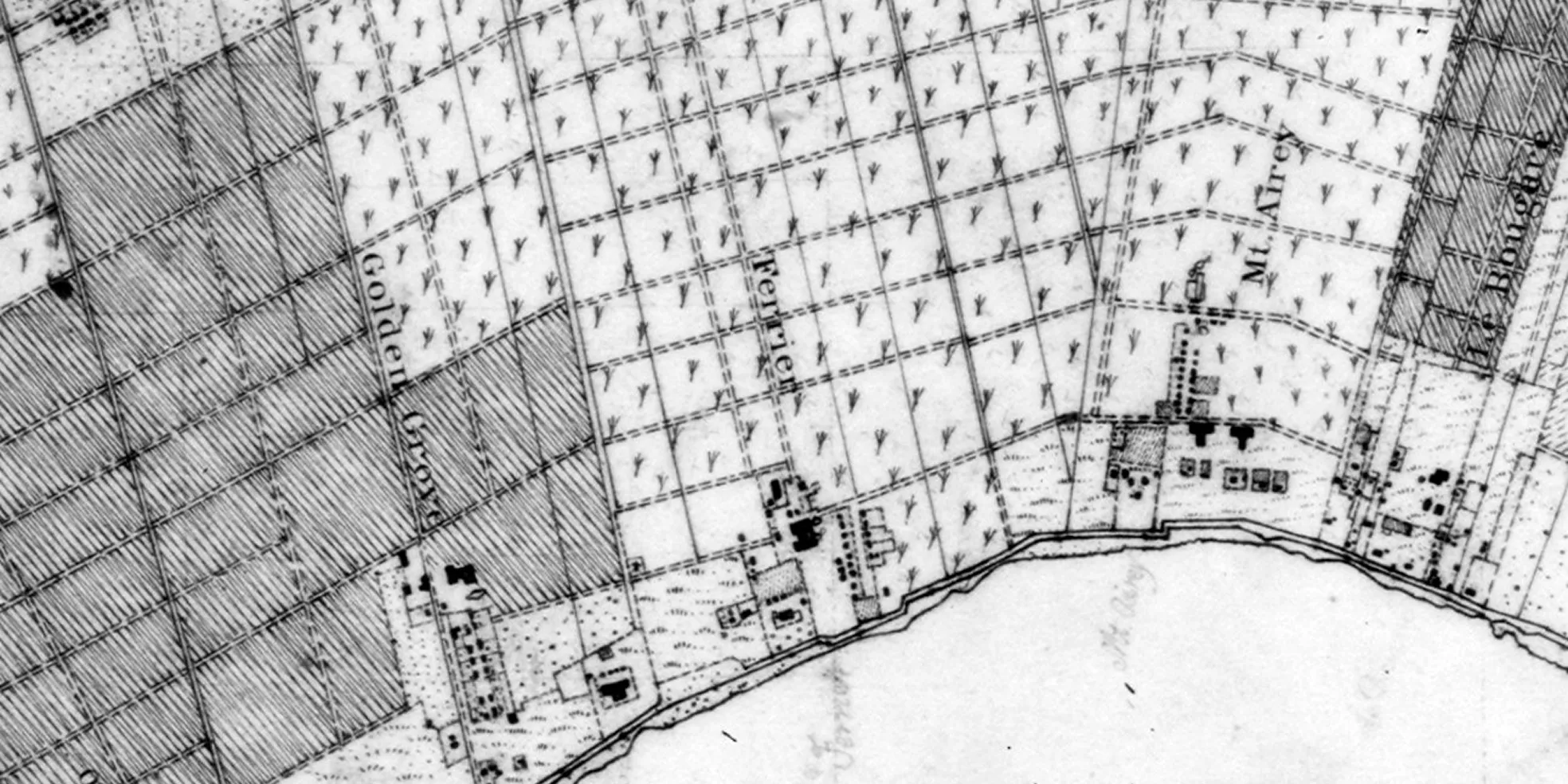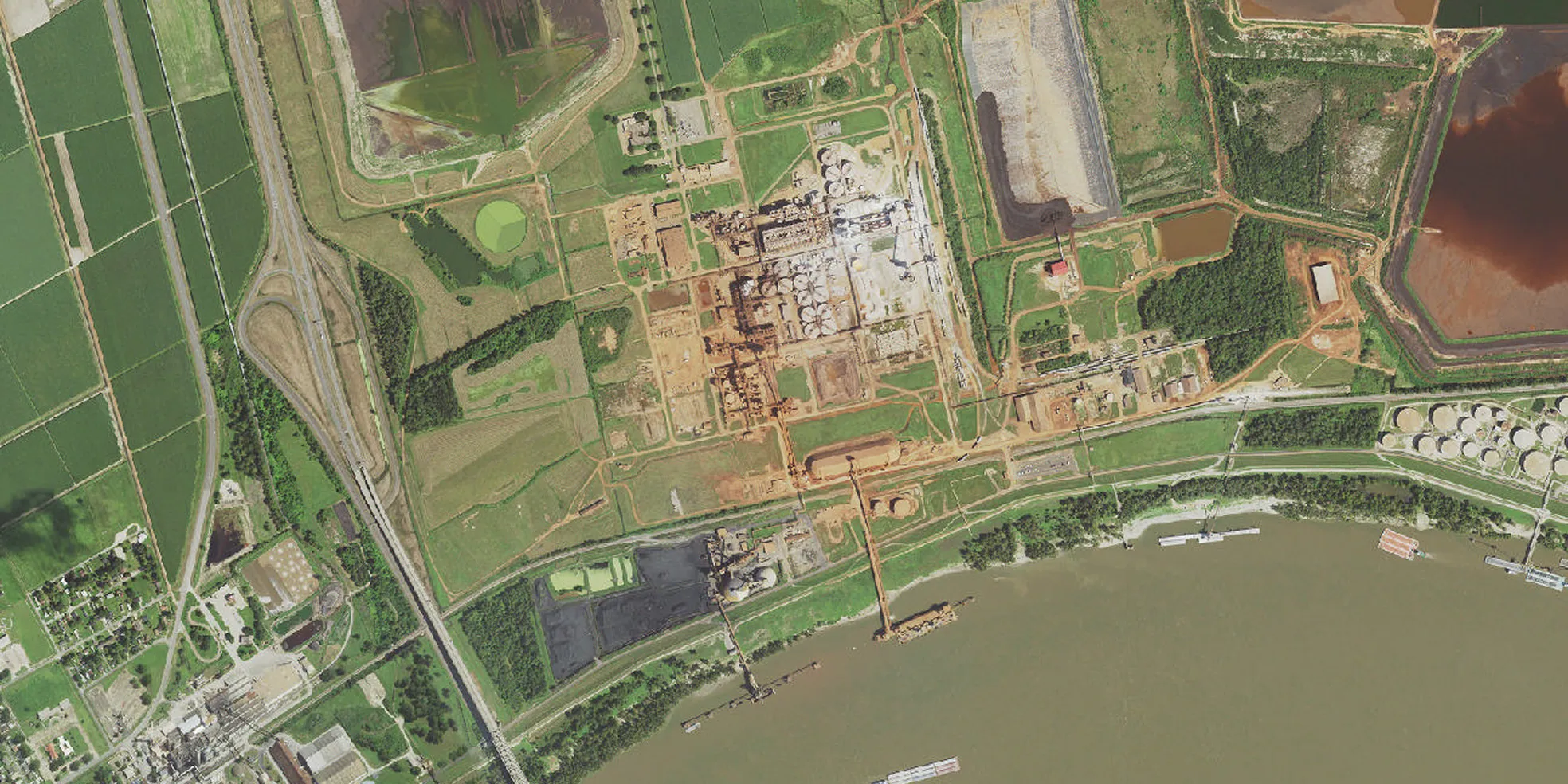Lake Maurepas CCS

CCS Waste Storage Scheme Threatens Treasured Waterbody
Exploratory Map
See the full map to explore the entire scope of the project.
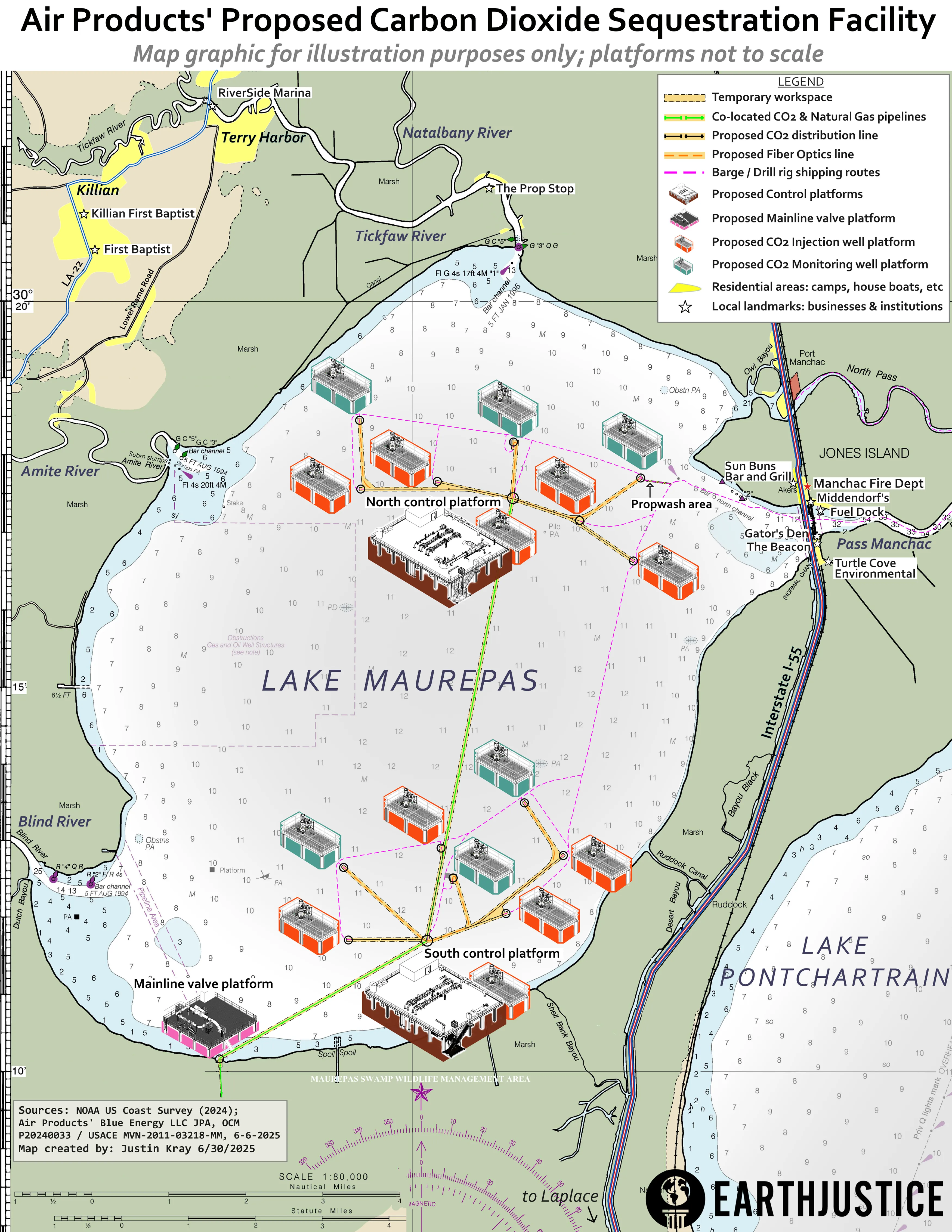
Create visually arresting graphic to drive public engagement
Advocates needed a map to demonstrate the scale of negative impacts upon the lake, to get the word out and generate public interest, which in turn would compel public agencies, like the Army Corps of Engineers, to schedule public hearings for their required permits. Agency permit hearings are discretionary, and in this case it was absolutely necessary to counteract the company’s deceitful narrative of a ‘perfectly safe’ pipeline with negligible impacts. The Lake Maurepas CO2 injection site is only one component of the larger Air Products proposal to build a massive new ammonia plant, which comes with different risks, trying to convey all of this in one map was not possible, so I created a different set of maps for the CO2 pipeline, and the ammonia plant, in order to better show the entire scope of the proposal, and highlight other problematic aspects of their plan.
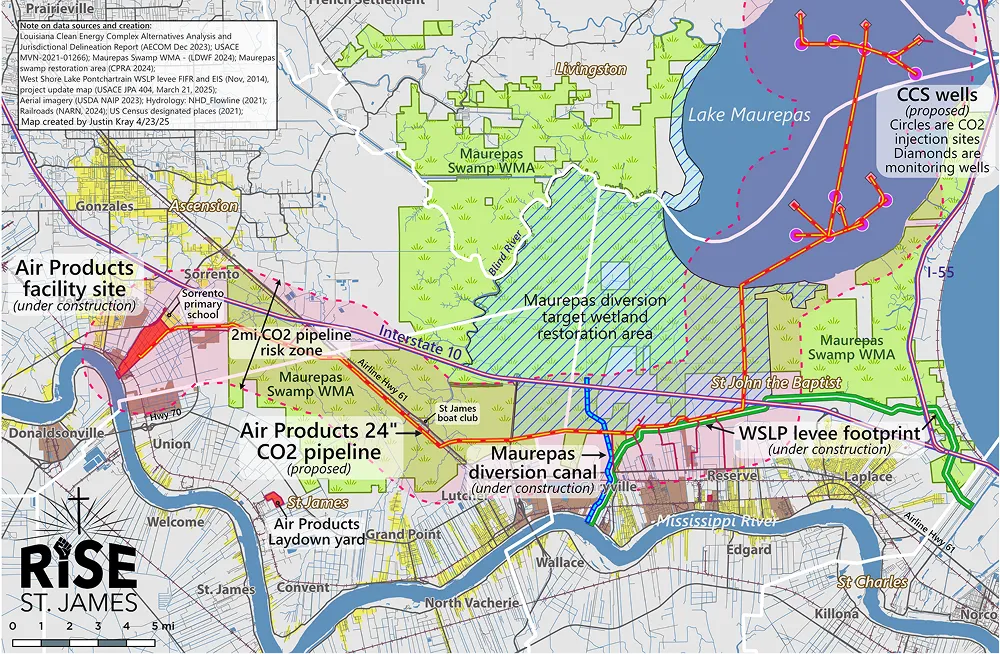

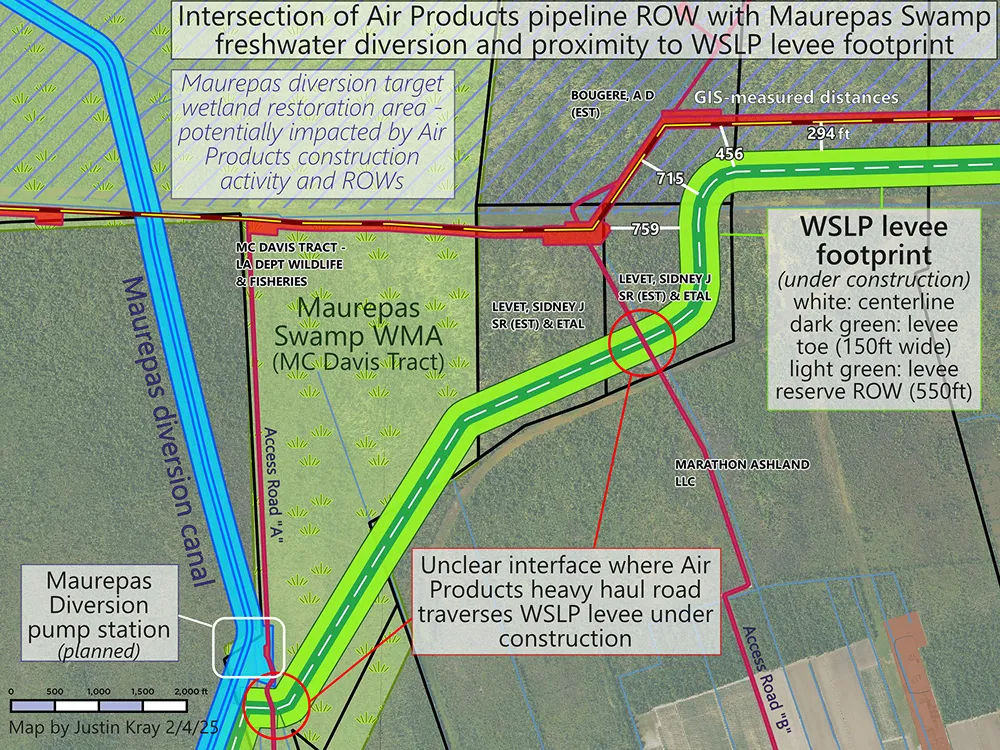
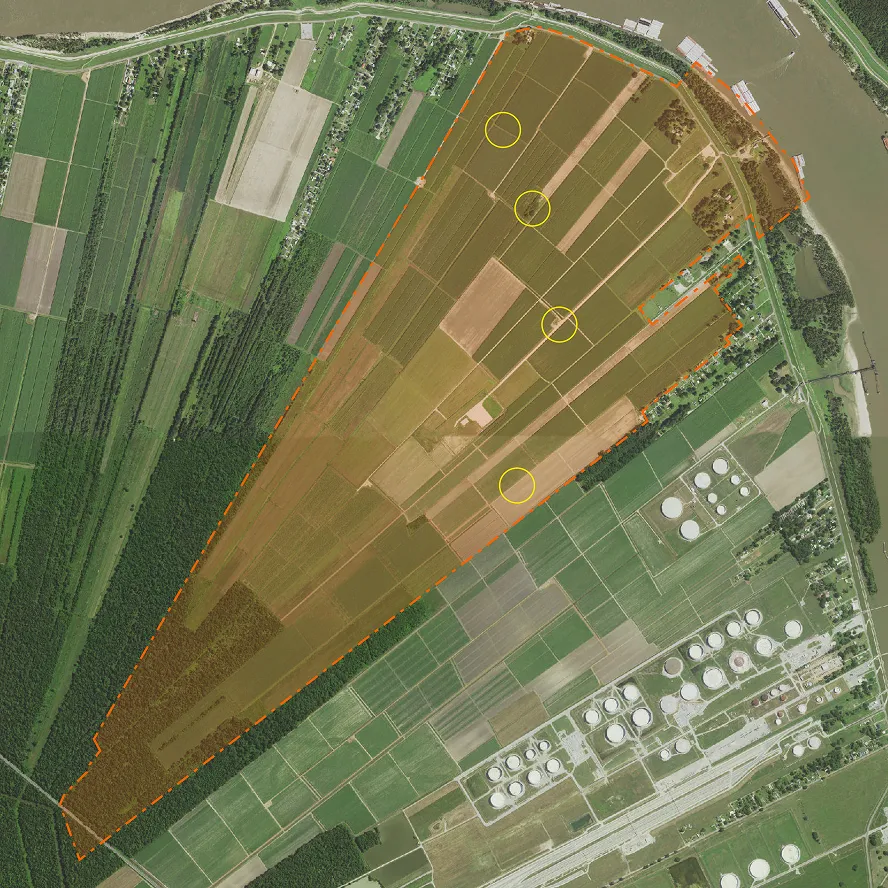
Groundswell of Opposition Demands Permit Denial at Public Hearing
Using the maps and graphics, organizers created fact sheets and posters to spread the word online and in person. This public media campaign generated enough attention to force the Army Corps to schedule a public hearing on the wetland permits. The outreach work continued to build momentum, evidenced by a packed town hall event on the scheme organized by local elected public officials, and at the public hearing held by the Army Corps in LaPlace, St John the Baptist parish. This permit battle is still in the early stages however, as the company has not backed down from their application, and the state regulatory agencies stay quiet. The Army Corps holds significant power in this situation, to require the applicant to develop a full Environmental Impact Study (EIS), which would not be able to ignore the harm caused by this proposal.


